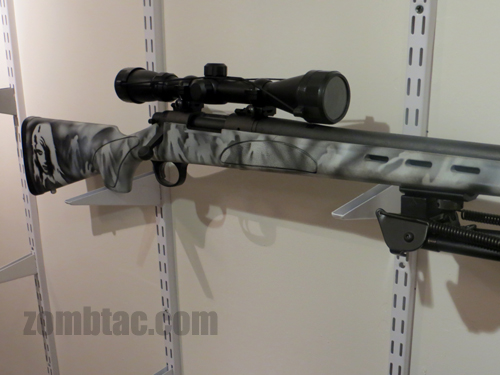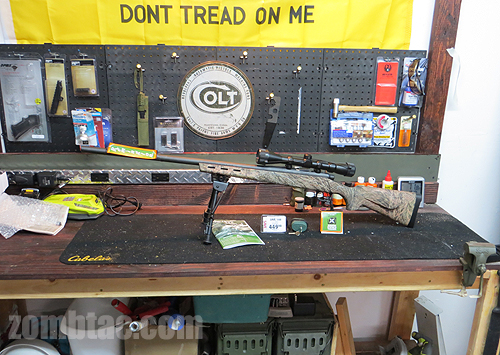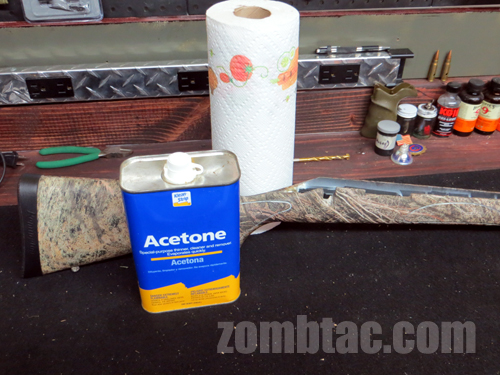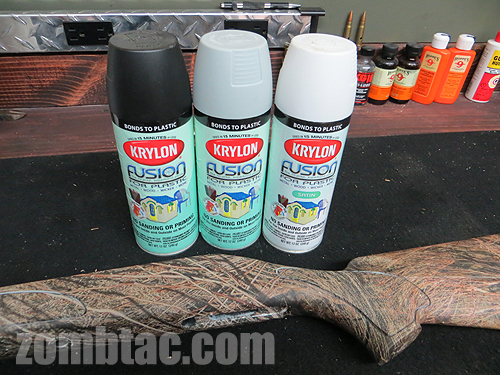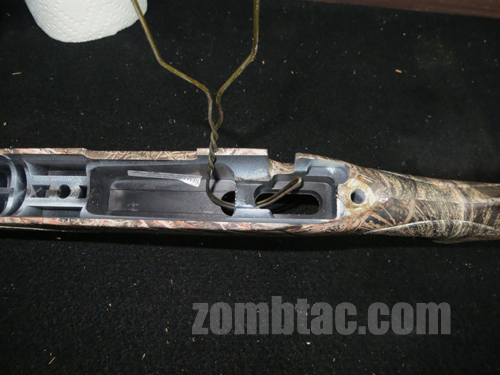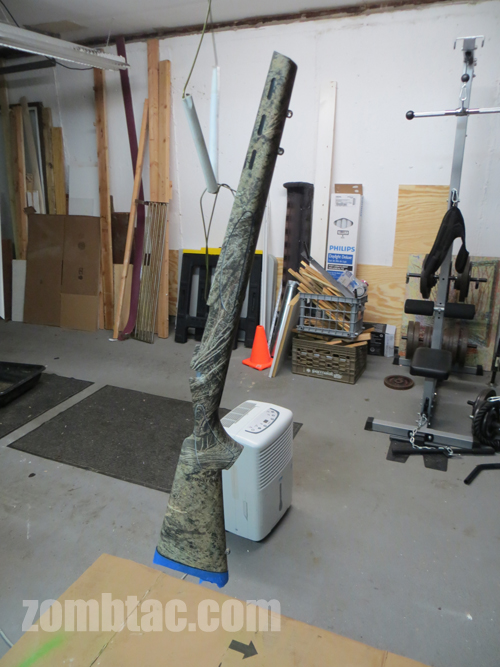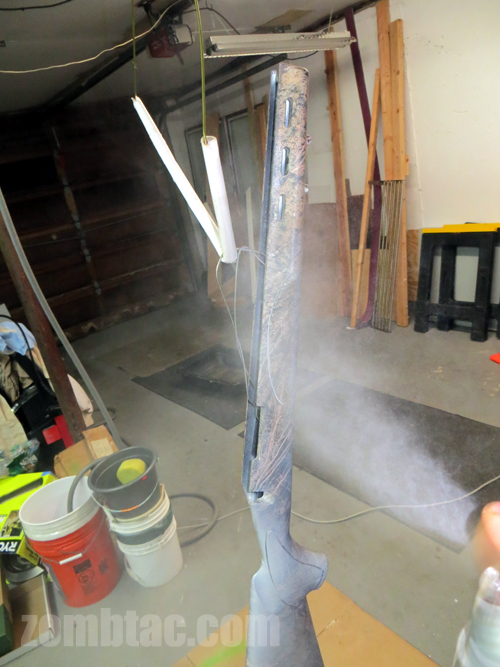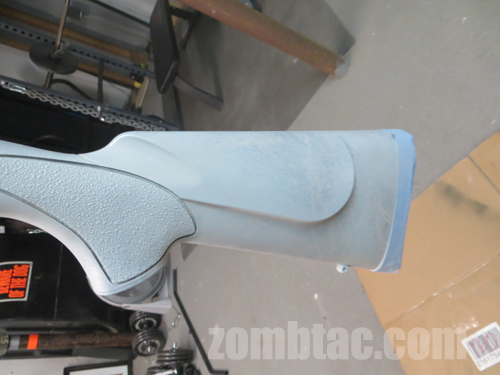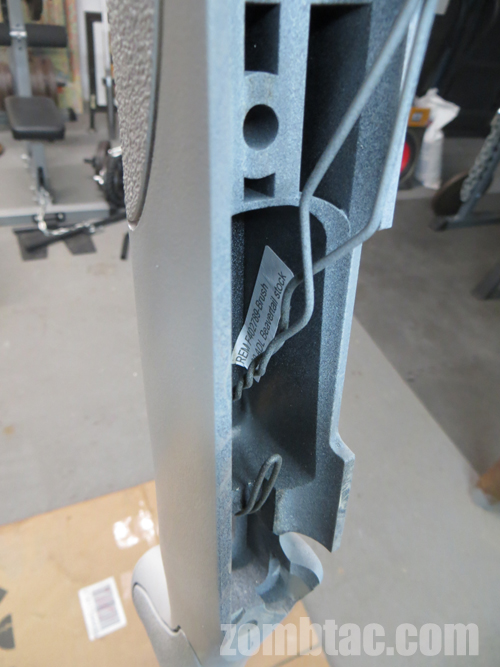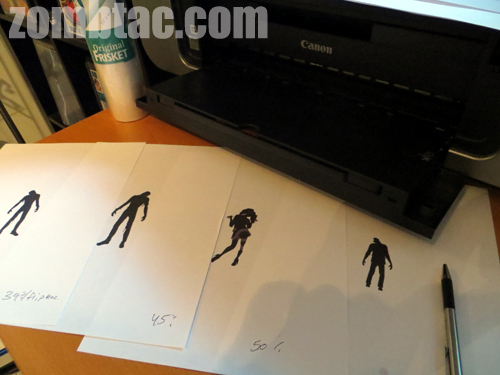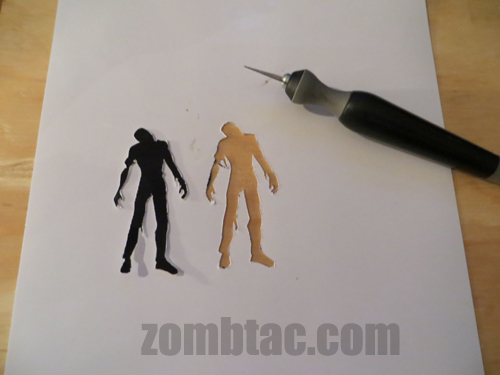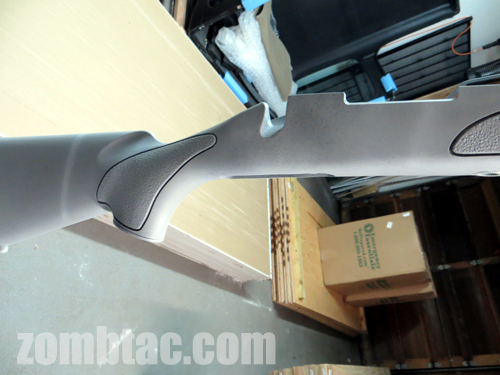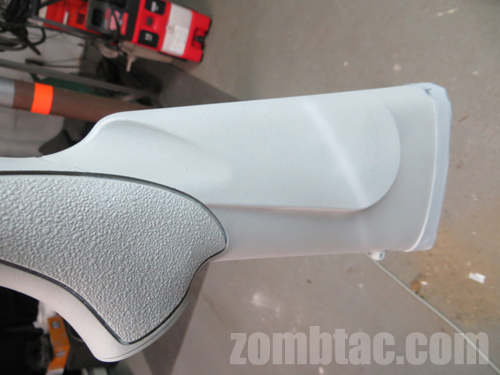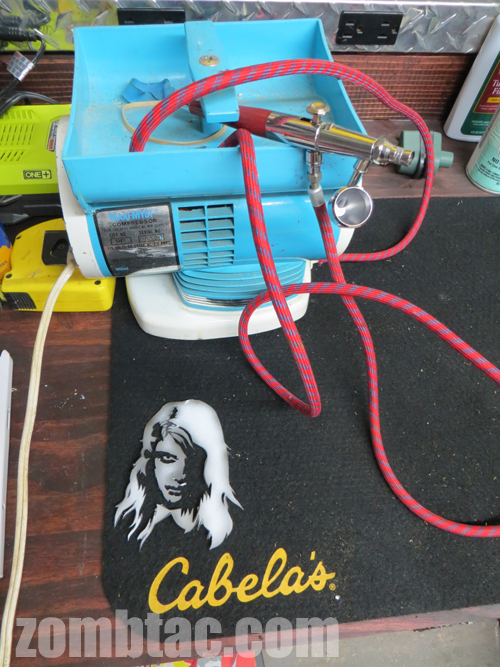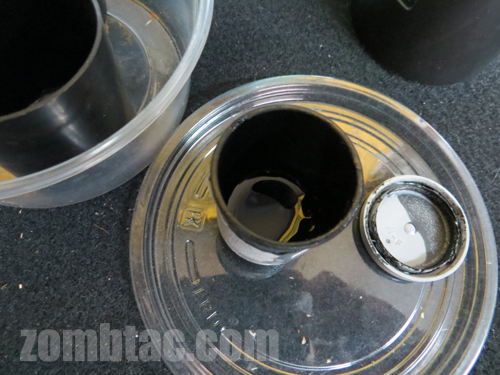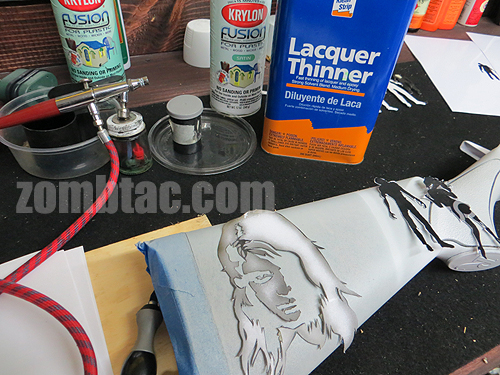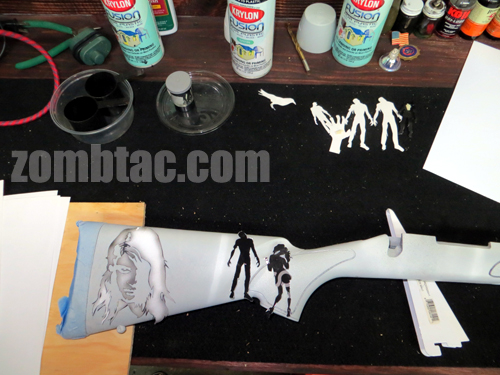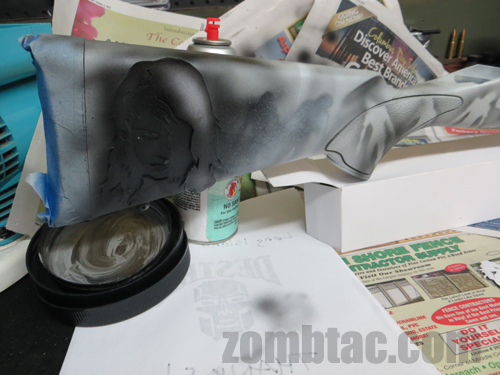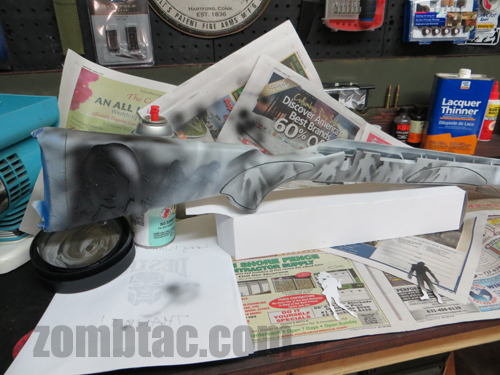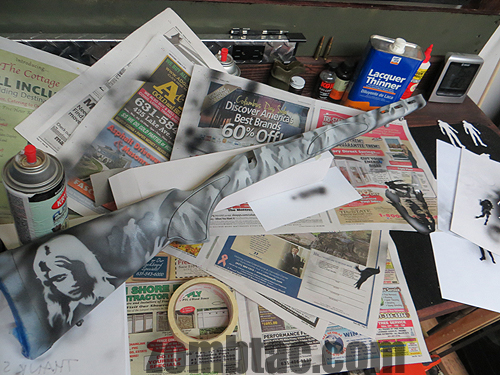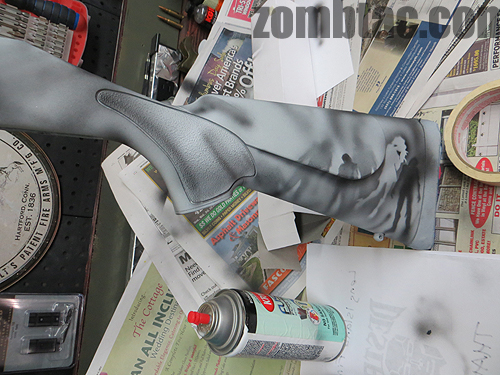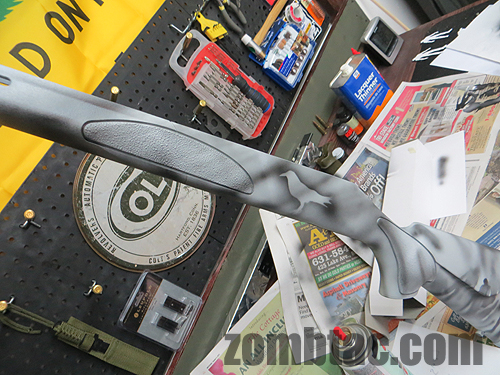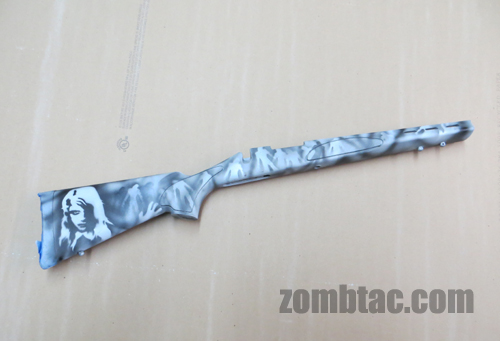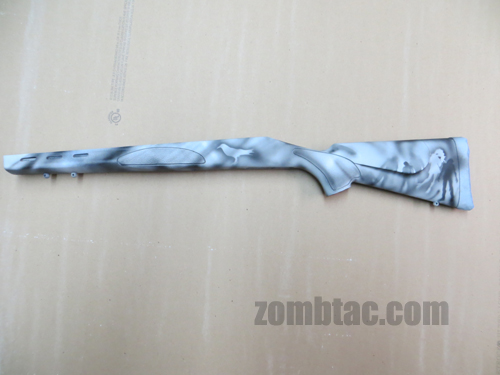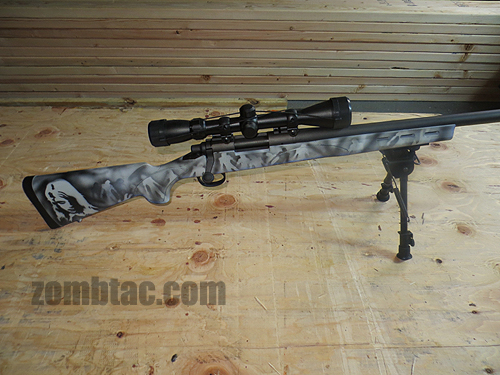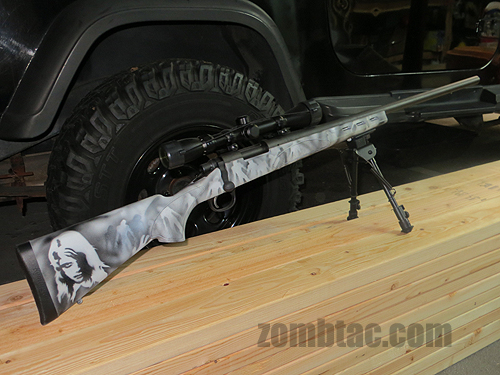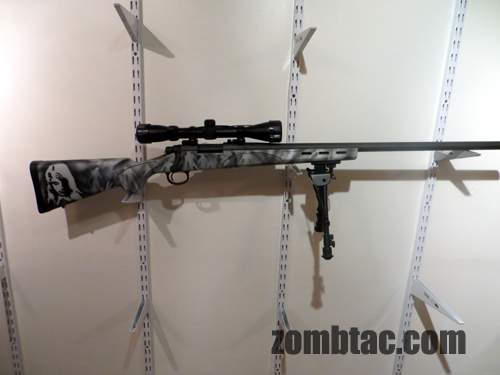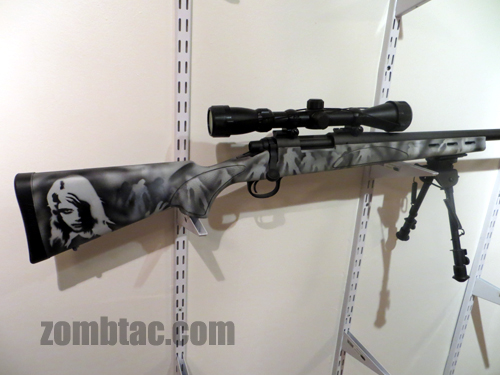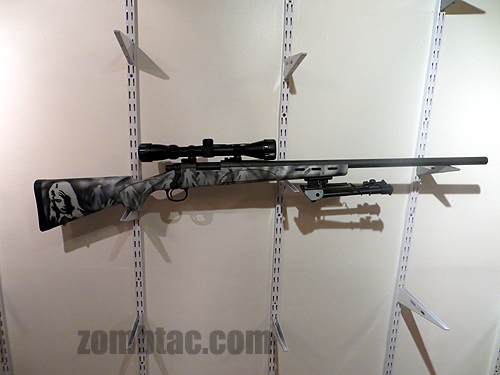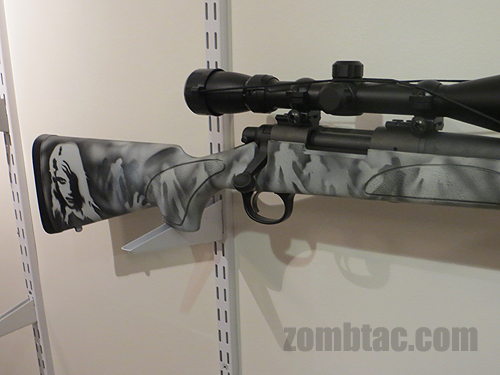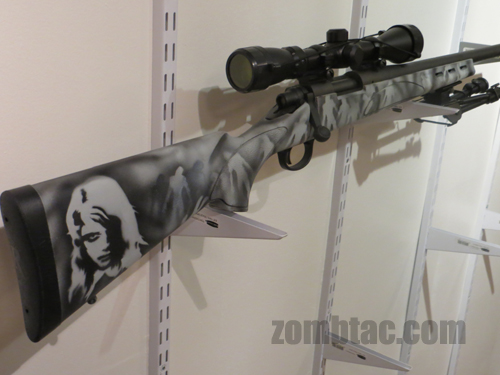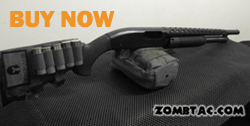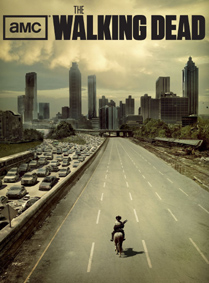Zombie Tactical Camo Paint Tutorial
|
It is advisible to use gloves and have good ventilation when
using Acetone.
For our paint we're using Krylon Fusion, a great spray can product that works well on plastics, with it's "bonds to plastic" formula that gives it a nice connection, even under flex. Krylon Fusion has become a favorite with active duty snipers who field paint their guns to their surroundings and it comes in a Camoflauge line of colors. For our "urban" camo, we are using a Satin Black, Pewter Gray, and White.
Hang the stock from the ceiling (joists, braces, hooks, whatever works) of your garage/shop/ or outdoors. Also, we taped off the black rubber recoil pad as it was simply quicker to do so. Mask off any areas on your gun or furniture that you want to leave unpainted with painters or masking tape. You can also drape the floors with carboard to prevent any accidental drip or overspray.
Shake the rattle cans well. We recommend over a minute, then rest it, then shake again. Begin to lay down even sweeps of spray a good 6-12 inches from the stock. Light, even sweeps of spray is key to laying down good layers. You need to build up the layers, not lay it on thick. Go low and slow like smokin' a hog. Don't rush it. You can always add more layers, but cleaning up a thick, runny paint job may be un-fixable.
The first layer should be light and even enough so that parts
of the original color or pattern shows through.
Be aware of which parts of the furniture will show when you reassemble
the action. Be sure to spray all angles and areas of the gun that
will be visible. As we let the base coat dry and set (we recommend letting the
base dry overnight) we can prepare our stencils. The camo job
will be accomplished by spraying a "layering" of patterns
through and around stencil cut-outs of images.
Here's a closeup of the eveness of the gray base, and a stripe shot across the butt.
Moving on to the camo pattern, we're going to be using an old
oiless air compressor from the 80s and a Paasche Double Action
Entry Level Airbursh. You can accomplish the pattern by spraying
straight out of the cans, but test the stream and be very careful
when doing so. You can also pick up a cheap airbrush kit from
Harbor Frieght Tools.
The Krylon paint can be "cut" with Lacquer Thinner
to help propel the paint through the airbrush. A few drops into
the paint should suffice. This is really trial and error. Lacquer
Thinner will also clean the paint and your can run it through
the airbrush to clean it when the painting is done, or if using
a rattle can you can clean the plastic spray tip with it as well
(as they are known to gum up).
You can shoot black around the solid stencils to create an outlien
(thus a gray base zombie) and shoot black through the cut out
stencil to create solid black zombies. By spraying through a stencil
that is held a distance away from the actual stock, you can create
elongated or distorted images. You can layer and mist coats of
the images, to create a faded camo blend.
|
